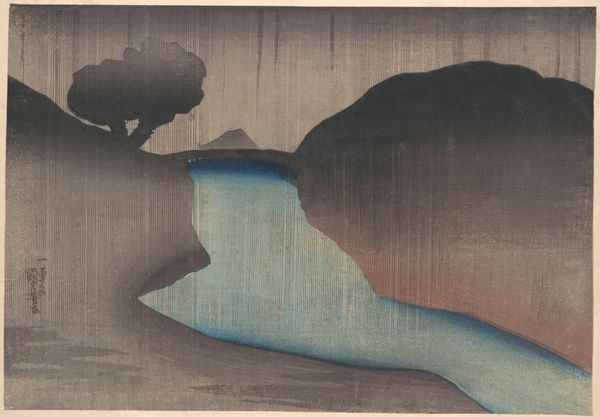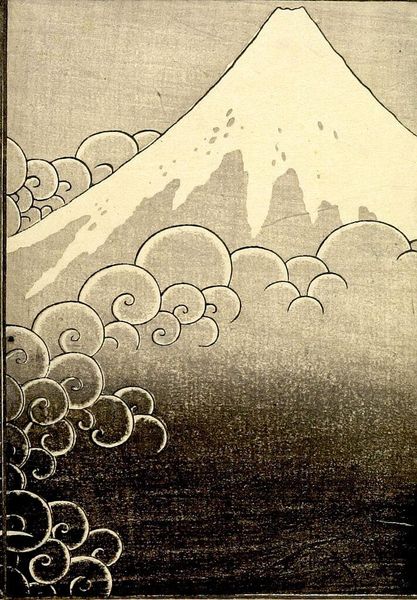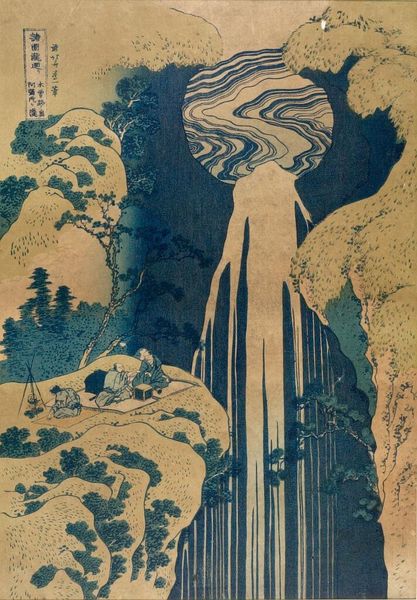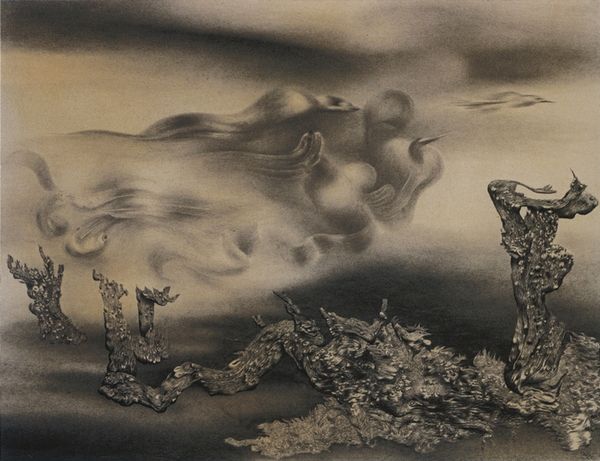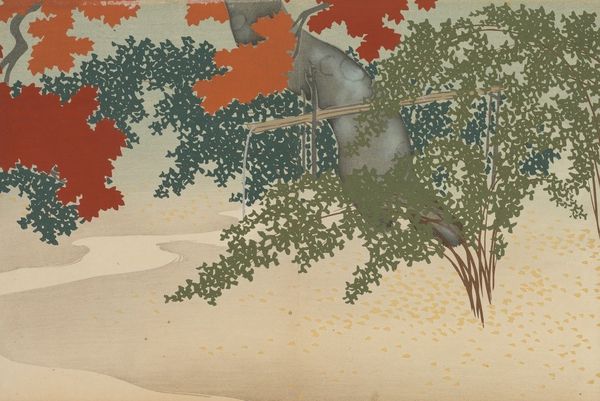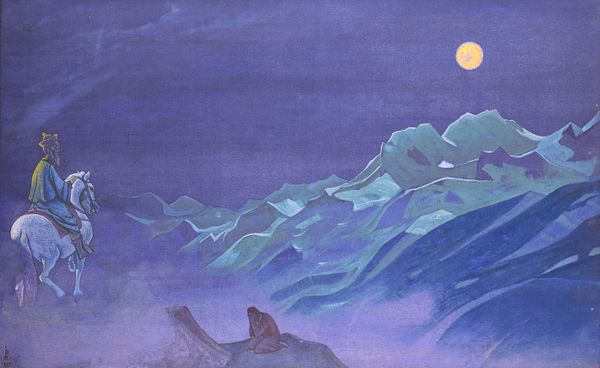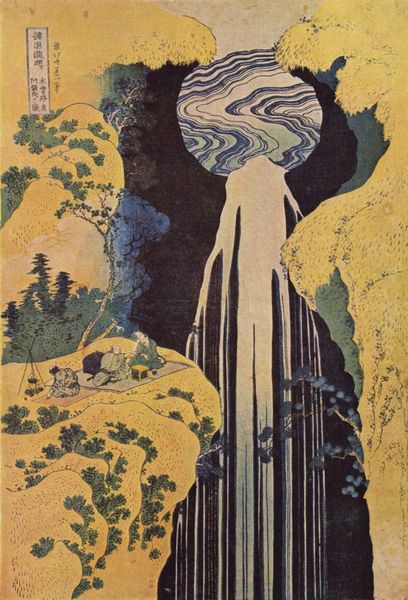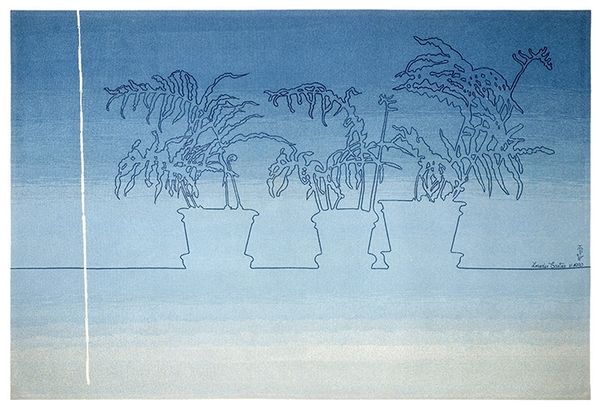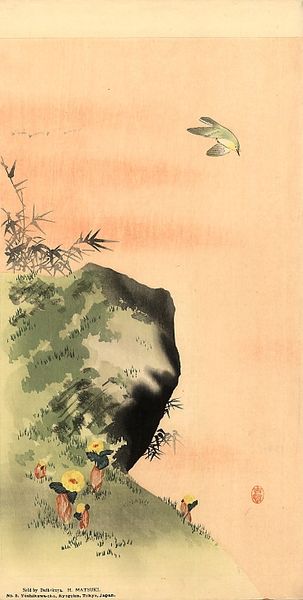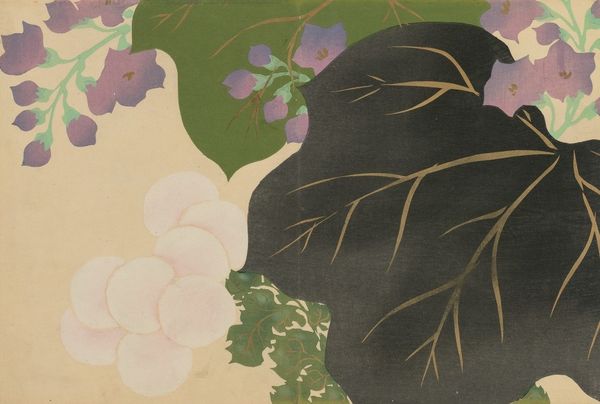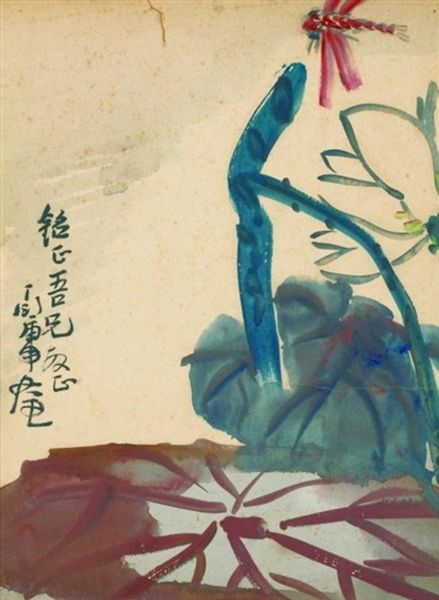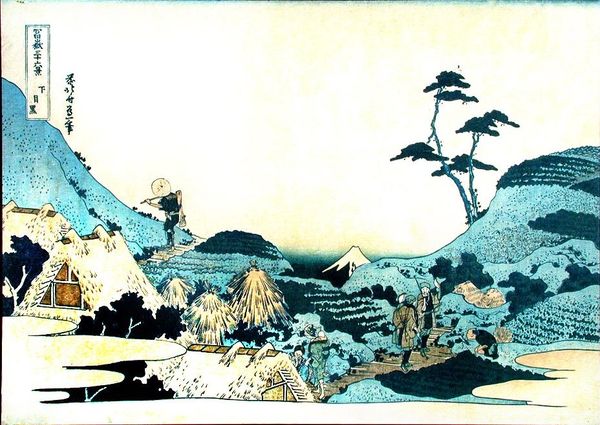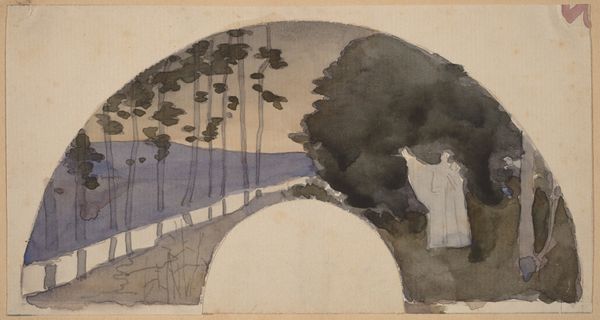
Copyright: Public domain
Editor: Here we have Nicholas Roerich’s *Dream of the East (Rebellion)* from 1920, done in tempera. The first thing that strikes me is how dreamlike it is. This monumental, almost ghostly face looming behind this rather sparse landscape… What do you make of it? Curator: Roerich was deeply invested in the cultural and spiritual connections between Russia and the East, particularly India and Tibet. Think about the historical context of 1920 – Russia had just been through the revolution, and Roerich, though initially supportive, became disillusioned. Do you see this potential disillusionment reflected here, perhaps in the “rebellion” aspect of the title? Editor: I do now that you mention the Russian Revolution. The face has such a stoic expression; it almost seems like it's witnessing something monumental but is powerless to stop it. How did Roerich’s involvement with mystical societies impact how his work was viewed then? Curator: It significantly shaped the reception. Roerich’s blending of Eastern spiritualism with art resonated with those seeking alternatives to Western materialism after the devastation of World War I. But this was also the era of high modernism, and many critics dismissed such spiritual approaches. Was he trying to reclaim some indigenous identity in times of turmoil by showcasing a mythic figure? Editor: That’s interesting. So, his spiritual themes were both a selling point and a point of contention depending on the audience and what lens you view them through, politically. Curator: Precisely. The "Dream of the East" becomes a complex commentary on cultural identity, political upheaval, and the search for meaning. Are those trees almost representing watchtowers to a lost horizon of identity? Editor: I hadn’t considered that, but now the composition feels very deliberate. I see a tension between the dream and the reality of the revolution and the shifting cultural landscape. Thanks so much for your insights. Curator: My pleasure! It’s always interesting to see how historical context can reshape our interpretation of an image, even one that seems so serene on the surface.
Comments
No comments
Be the first to comment and join the conversation on the ultimate creative platform.
